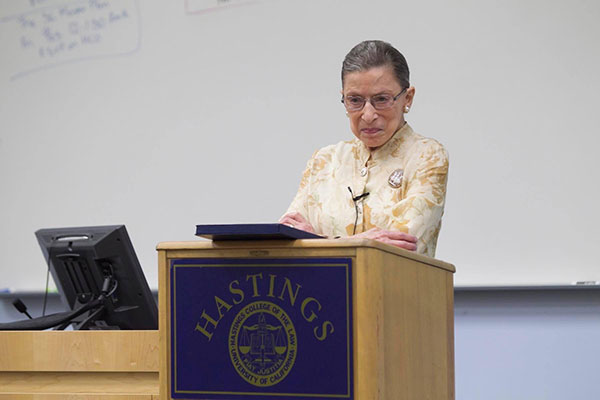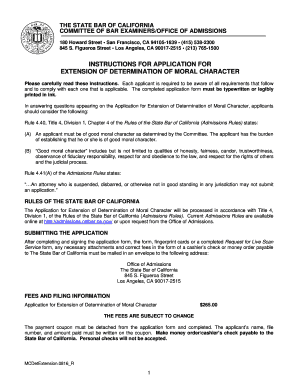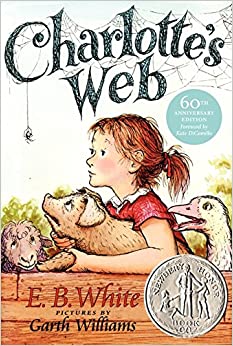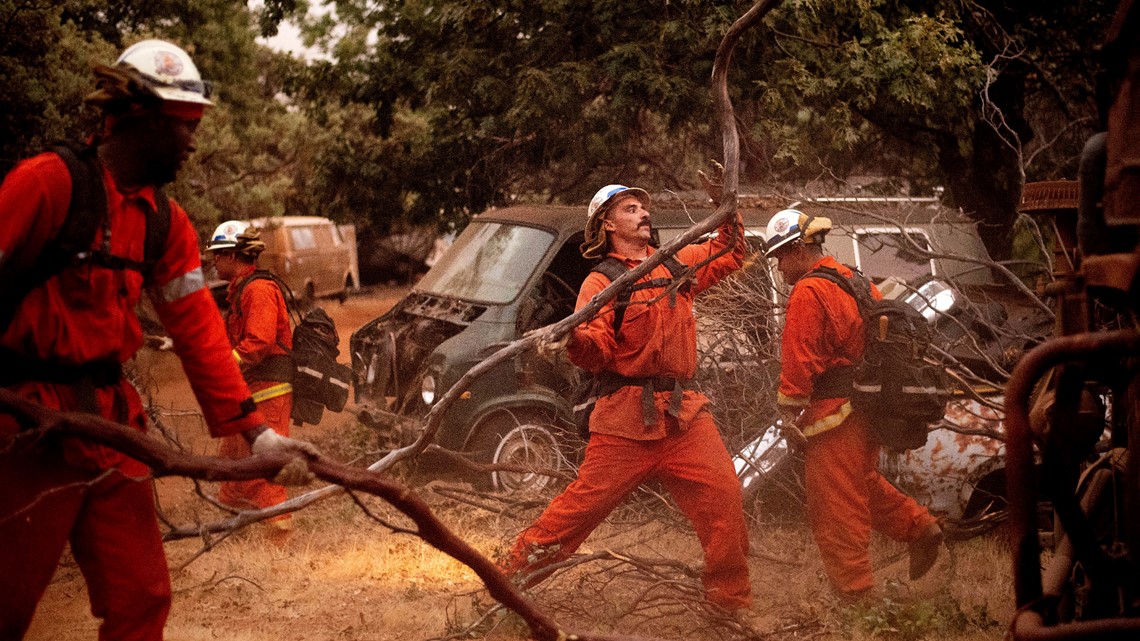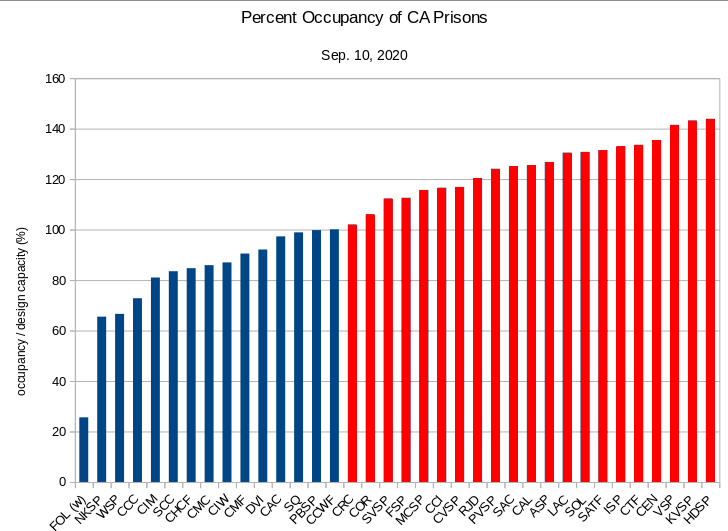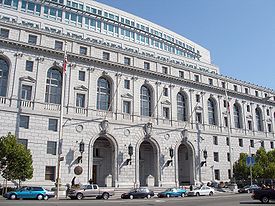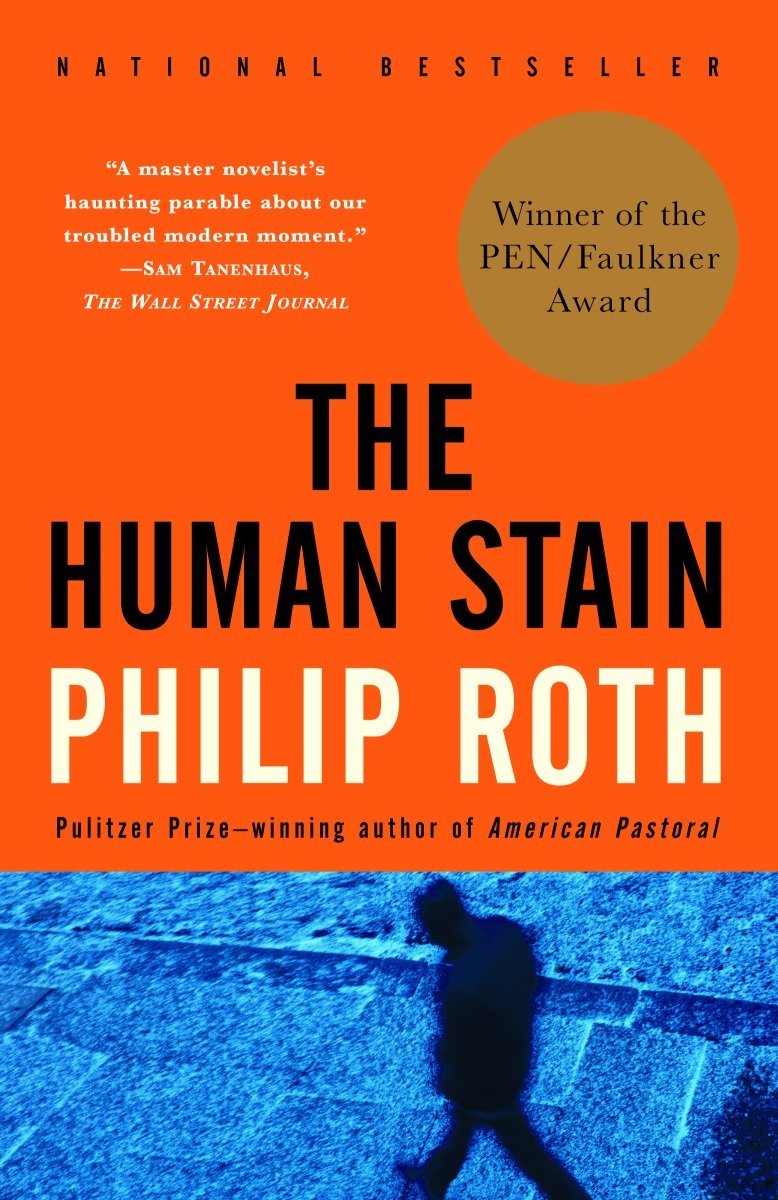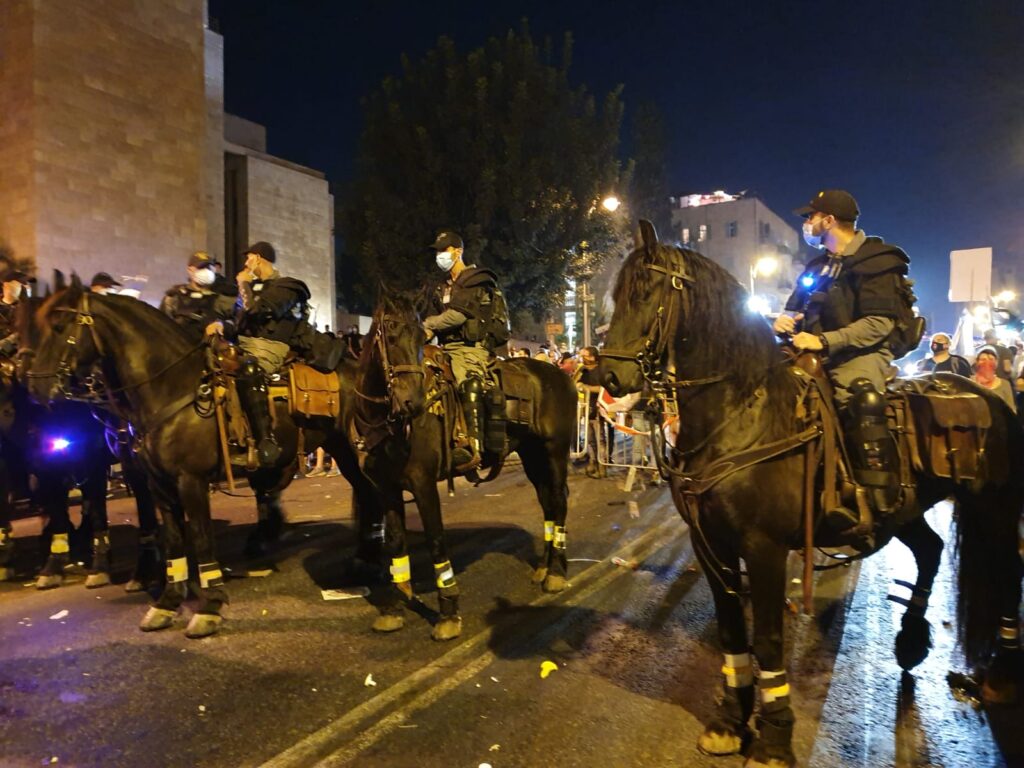Millions of people grieve the loss of legal giant Justice Ruth Bader Ginsburg today and appreciate her enormous contributions to fairness and equality. I would have loved to discuss Justice Ginsburg’s legacy in criminal justice decisions (I’m planning to do that in class on Monday) but apparently we don’t get a second to mourn and respect, because we’ve already been thrown into an imbroglio of political machinations and cost-benefit tactics. Today I did an explainer with Manny Yekutiel of Manny’s, which I’m happy to share in case it is useful.
Homeopathic Criminal Justice Reform and Its Discontents
In my previous writings about the COVID-19 prison disaster (especially here and here), I relied on Ben Bernanke’s famous “triggers and vulnerabilities” model. I explained that the virus happened on a fertile Petri dish of neglect, both preceding and following the Plata litigation. But it’s just occurred to me that there’s a better way of explaining why the problem lies not only with the prison healthcare crisis that preceded Plata, but also with the Plata remedy itself: Criminal justice reforms in CA (through litigation as well as legislation) are often like homeopathic remedies: a low-concentration of the exact problem they purport to solve. The crisis we are facing now is merely an exaggerated example of the futility of homeopathic criminal justice reform.
Homeopathy, the creation of Eighteenth-century physician Samuel Hahnemann, follows an idea known as the Law of Similars – the idea that, if exposure to substance X causes symptom Y in a healthy person, substance X can cure symptom Y in a person where they occur naturally as part of a disease process. For example, exposure to onions causes an itchy, stinging sensation in the eyes; therefore, the homeopathic remedy for hay fevers or head colds accompanied by such sensation is a low-concentration formula of onion.
I’ve come to see criminal justice reform initiatives in California as low-concentration forms of the underlying problems they purport to solve. The COVID-19 “relief” policies sold to us by the Governor and CDCR are a case in point.
The problem we had to solve was a giant, bureaucratic correctional monster, which we could not wrangle. The Plata solution: we made it more complicated by breaking it into 59 monsters that have an equally unwieldy, though different, structure. We’re now dealing with the ramifications of this homeopathic preparation: inscrutable BSCC reports on jails alongside journalistic exposés of serious outbreaks; four months of delay before numbers were even available; traffic between jails and prisons that is unpredictable and difficult to regulate.
The problem we had to solve was the rate (and percentage of the general prison population) of aging, infirm people serving interminable sentences. The Plata solution, the Prop 47 solution, the Prop 57 solution: reinforce the notion that these people belong in prison by designing all releases around the issue of nonviolent offenders. While removing people from prison (diluting them) this, ironically, increases the concentration of aging and infirm people in prison so that they are the ones exposed to healthcare scandals.
The problem we had to solve was a bloated correctional apparatus, whose provenance was decades-long oversensitivity to victim pressure groups advancing a monolithic vision for alleviating their plight: Monstrous sentencing policies. The solution we’ve devised for COVID-19? Anticipate the sensitivity and address it by avoiding releases of people convicted of violent crime.
The problem we had to solve was a “correctional free lunch”, in which people in the community were largely unaware of the costs of our correctional system because these were concentrated in large facilities in rural and remote areas. The solution? Now we encourage community-prison alienation through jurisdictional jockeying for position between county health officers and the prisons that are literally located amidst these counties and irrational fears that releasing people will infect the community (the opposite is true: incubating the disease in prisons is much more risky for communities.)
As we’ve seen in the COVID-19 release plan (before and after its implementation), and just like homeopathic formulas, diluting the problem results in obtaining a placebo at best, and a worsening of the problem at worst. The logic of the Law of Similars is supposedly an appeal to the idea of a “natural law” principle, but actual science refutes this: what makes sense is to treat an ailment with an antidote, not with a diluted version of the same ailment. The antidotes are obvious to me: Thin out the monster by locking fewer people up in fewer places. Do not lock up aging, sick people. Give victims/survivors better roles than the world curators of what should happen to offenders.
Which brings me to why I think the analogy matters. As I’ve explained elsewhere, I don’t think this is some evil, sadistic ploy at work here. I think what’s stopping state and prison officials from applying the antidotes is institutional intransigence and fear. Homeopathy itself was borne of Hahnemann’s disgust with the medicine practiced during his era: bloodletting, leeching, purging, etc. By contrast to these harmful measures, the delicacy of the diluted solutions was mellow and reassuring. Here, too, there’s immense fear of what would happen if drastic measures were taken. I saw this logic at the recent federal Plata hearing (though, admittedly, the PLRA plays an important role here, too) and also at the two state courts. We don’t like drastic solutions and purging; better to drink a Bach Flower distillation.
Ashley Rubin’s forthcoming book The Deviant Prison looks at why the Pennsylvania incarceration model, practiced at Eastern State Penitentiary, persisted long after it was proven not to work. I see the same form of institutional obstinance at work here. And, by contrast to Eastern State, this is perpetuated because homeopathic criminal justice reform has become the habitual, accepted mode of doing things. It might be sobering to realize that homeopathic preparations are the only category of alternative medicine products legally marketable as drugs. Quackwatch explains that this situation is the result of two circumstances. First, the 1938 Federal Food, Drug, and Cosmetic Act, which was shepherded through Congress by a homeopathic physician who was a senator, recognizes as drugs all substances included in the Homeopathic Pharmacopeia of the United States. Second, the FDA has not held homeopathic products to the same standards as other drugs. Today they are marketed in health-food stores, in pharmacies, in practitioner offices, by multilevel distributors, through the mail, and on the Internet. I think that our habituation to homeopathic criminal justice reform has created a similar situation, where we are willing to accept these placebo solutions because the ideas that drive both the problems and the solutions have been so hammered in, that we can’t imagine anything else.
How Bar Applicants with Criminal Records Experience the Moral Character Determination
My paper “Moral Character: Making Sense of the Experiences of Bar Applicants with Criminal Records” is out from the Manitoba Law Journal. It is an interview-based study of bar applicants, bar officials, and ethics attorneys, and the way they experience and process their pasts and presents via the California Bar’s moral character determination. The journal is open source, so you’re all welcome to read the full thing (which mostly speaks through my interviewees’ voices) but for those pressed for time, here are just a few of my findings:
- The most dominant emotion that arose in the interviews was shame, stemming from the juxtaposition of my interviewee’s pasts and their elite professional futures. My interviewees, most of whom had managed to
morph their self-identity to conform to their new status as candidates for the legal profession, were reduced by the process into their former shoes as convicts and/or prisoners. - The bar process exacerbated the shame. The stringent requirements of accuracy in disclosure are obtuse to the difficulties of recreating unsettled adolescent pasts, and the choreography of the hearings (no support for the applicants, cross examination styles, etc.) was described by six of my interviewees, without any prompting from me, as “the worst experience of my life.” This, mind you, included people who had done time in jail and/or juvie.
- There was a striking contrast between the Bar’s framing of remorse as monolithic and absolute and the much more complex ways in which people described their feelings about their past crimes. The certainty that bar officials can detect insincerity is not borne by empirical science, which casts very serious doubt on anyone’s ability to tell true from false remorse. Moreover, the mediocre community theater aspect of the hearings does not leave room for people to discuss their experiences with true insight and nuance, and they know this, and it frustrates them. Moreover, cultural performance/presentation stands in the way of communicating remorse in a way that will be properly “read” by officers of a largely white, elite, male profession.
- The demographic effects of professional exclusion from the bar are largely unknown because, until recently, the bar didn’t even collect data on the race/class of people and how they fared in the moral character process (we do have evidence that black male lawyers are significantly discriminated against in disciplinary proceedings.) White applicants felt that their deviance and alienation was unseen because it wasn’t part of the usual demographics boxes; applicants of color felt that they were doubly deviant and “otherized.”
- There is a lot of hubris, which echoes the hubris I found when I studied parole hearing, in the assumption that the key to rehabilitation is the performance of psychic excavation in front of a panel of strangers. This is nonsense from a research standpoint. We know that rehabilitation is what rehabilitation does: people who are holding down jobs and going through law school in good standing are great prospects for professional success–and they don’t necessarily overlap with people who give a convincingly weepy performance in front of 4-7 people in suits. Specifically, the bar ignores established, robust findings from life-course criminology according to which just going through and finishing law school is in itself a strong indicator of desistance.
- The bar frequently diagnoses substance abuse issues and forces people through substance abuse programs. The interviewees themselves report that they found some value in the programs even though they didn’t actually have a substance abuse problem. I don’t know whether this reflects people in denial about their problems, overcautiousness on the part of the bar, or both.
- Even as people experience joy and relief at their eventual admission to the bar, the experience continues to haunt them and adds stress to their professional and personal lives. The extent to which people are open about their backgrounds after their successful admission to the bar varies widely, with public interest lawyers much more open and corporate lawyers much more circumspect.
- What the bar views as uniformly negative baggage is actually a rich and important asset to the profession. My interviewees talked about their experiences as a catalyst for their decision to pursue justice for clients and about their deep understandings of injustice and oppression. But treating criminal records as liabilities, rather than resources, we are missing on an important opportunity to make the bar more receptive and service-oriented to clients who would greatly benefit from their lawyers’ empathy and compassion, through professional diversification beyond the usual census boxes and through education of the profession as a whole.
- Even though my interviewees regarded their law schools–and especially their faculty–as sources of empowerment and good advice, there’s more law schools can do. We can alert people, in law school application forms, that accuracy in describing their backgrounds is key to being regarded as honest and forthright later, in the bar admission process. We can give people access to their admissions package when they prep for the moral character. And we can devote a smidgeon of the immense energy we’ve devoted to lowering the bar passage rate to advocating for our students with criminal records.
Uncomfortable Telling your Child that Meat Comes from Animals? Don’t Eat Animals
I try to be patient with the travails of parenting. Trust me, I have plenty of my own. But massive hypocrisies get my last nerve. See this parenting column from Slate:
Our sweet, funny, VERY sensitive just-turned 4-year-old daughter loves animals—and is right on the verge of figuring out where the meat we eat comes from. To be clear, we have never deliberately hidden this from her, but she has never expressly asked about it, and there’s no good way to randomly segue into “By the way, your dinner used to be alive.” She avoids eating chicken and turkey, and we’ve realized this might be because they’re called “chicken” and “turkey.” She does eat (with great joy) meats that don’t have the same name as their source animals, such as bacon, steak, and pot roast, but it’s clear from her comments that she doesn’t have a lock on what they’re made of. (“Dad, wouldn’t it be funny if bacon came from a pig like the ones that oink?!”) At some point soon, the jig will surely be up, and it is not unlikely there will be a lot of tears, some deep existential horror, and feelings of betrayal directed at us. If that’s the case, she’s also going to feel sad and mad about her conflicting feelings about whether to eat some of her favorite foods or not. How can we address this honestly while minimizing her distress? It seems like we should be preemptive about it, but how do we bring it up? For the record, we will tell her about vegetarianism and would be happy to stop feeding her meat if she asked (while ensuring that she gets enough protein and other nutrients, of course). We also do make an effort to purchase cruelty-free meat whenever possible, but I’m not sure that “Hey, the pig had a pretty nice life until someone killed it so we could have it for breakfast” is going to impress her.
And see the “great” advice to facilitate the hypocrisy:
I know I don’t have to tell you not to dismiss her feelings when she discovers the truth about her meals. I do urge you to be truthful with her about how you feel about eating meat. I think being honest with our kids, always, is foundational to being good parents.
The bottom line, though, is that you can’t really minimize her distress, and, as much as we want to protect our children from pain and sorrow and conflict, we shouldn’t protect them from all pain and sorrow and conflict. If we do, they’ll never learn the coping skills all people must develop to deal with these feelings. The best thing you can do is sympathize with her and be supportive. If she tells you she is going to be a vegetarian from now on, talk to her about how you’ll have to make sure her nutritional needs are met by finding other sources of protein that she likes eating. (This could be a fun project, trying new foods and cooking together. I know it was for us.) Your job as a loving parent in this situation, I believe, is to support her decision, whether it lasts a few days, weeks, years, or forever.
I remember this coming up, with some nervous chuckles, in parenting groups I attended when Rio was little: people embarrassed when their kids pointed out to them that they use the same word for the nuggets they are served and for the cute farm animal (“chicken.”) A breathtaking variant is the person who doesn’t like the animals on their plate to look like what they are, which is animals.
Conflicted? Embarrassed? Giggling about your own hypocrisy? Facing your child’s tears upon learning that you are participating in something horrific for animals and for the planet? Go no further! I have some advice to offer you, offered in all caps for those who need special clarity:
IF YOU ARE UNCOMFORTABLE SHARING WITH YOUR CHILDREN THAT MEAT COMES FROM ANIMALS, DON’T EAT ANIMALS.
IF YOU FEAR YOUR CHILD WILL BE DISTRESSED WHEN THEY LEARN THAT THEY ARE EATING ANIMALS, DON’T FEED THEM ANIMALS.
IF IT EMBARRASSES YOU TO TELL YOUR CHILD “HOW YOU FEEL” ABOUT EATING ANIMALS, STOP EATING THEM, AND THEN YOU’LL FEEL FINE.
IF YOU DON’T KNOW WHAT TO TELL YOUR CHILD ABOUT EATING ANIMALS, DON’T EAT THEM, AND THEN TELL THEM WHAT I TELL MY SON: “ANIMALS ARE OUR FRIENDS AND WE DON’T EAT OUR FRIENDS.”
That’s fucking it.
A few recommendations for books to read with your child:
- Mathieu Ricard, Jason Gruhl, Becca Hall, Our Animal Neighbors
- Jason Gruhl and Ignasi Font, Everything Is Connected
- Abioseh Cole, Kayleigh Castle, I Am Not Food
- E.B. White and Garth Williams, Charlotte’s Web
- Smitri Prasadam-Halls and Katherina Manolessou, T-Veg
Essential viewing for you:
Also, enough already with the fucking protein. It’s not the struggle/challenge that people make it out to be. Kids need 1-1.5 g protein for every 2 lbs of weight. If you feed them good food, they are getting enough protein. Kids all over the world happily eat beans and tofu and their parents don’t fret about protein. Why don’t the animal eaters ever ask themselves about vitamins and fiber?
Thanks for listening to my TED talk.
Help Floridians Regain the Right to Vote
Florida is one of only four states in which people with felony convictions permanently lose their right to vote. In November 2018, Floridians sought to change this by passing Amendment 4 by a majority of %64.55. Amendment 4 would automatically restore the right to vote for people with prior felony convictions, except those convicted of murder or a felony sexual offense, upon completion of their sentences, including prison, parole, and probation.
Since the passage of Amendment 4, politicians have piled challenge upon challenge in the way of people seeking the right to vote. The latest hurdle came today, when the 11th Circuit ruled en banc that Florida may require people with a past felony conviction to pay off all fines and fees before they can get their right to vote back–even if they cannot afford to do so.
The only explanation I can find for this is an entitlement effect. I grew up in a country in which everyone, even people doing time in prison at the time of the election, can vote, and it would never occur to me that it’s possible or fair to do otherwise. But I suspect that what is at work here is an insidious version of the entitlement effect: They feel comfortable doing this because their point of departure is lifetime disenfranchisement. To them, it’s not about giving people what every citizen has and should have–it’s about gifting people a privilege they haven’t had in a long time.
We can do something about this. Hop on this website and plonk a few shekels to help your fellow Americans – Floridians who want to participate in our democracy and are being thwarted by politicians and courts – vote in the upcoming election. It’s good for Florida, it’s good for racial and economic justice, and it’s good for all of us, because you know that winning Florida is crucial in this election. According to Jeff Manza and Chris Uggen, at least one presidential election (now two, likely) and eight congressional ones would have gone the other way if people with felony convictions could vote. Prove them right by changing history and expanding democracy.
Gov. Newsom Clears Path for Incarcerated Firefighters to Work as Firefighters upon Release
| FOR IMMEDIATE RELEASE: | Contact: Governor’s Press Office |
| Friday, September 11, 2020 | (916) 445-4571 |
Governor Newsom Signs Bill Eliminating Barriers that Block Former Inmate Fire Crews from Becoming Career Firefighters After Serving their Sentences
OROVILLE – At the site of the North Complex Fire today, Governor Newsom signed AB 2147, a bill that eliminates barriers that prevent former inmate fire crews from pursuing a career as a firefighter once they served their time. Authored by Assemblymember Eloise Gomez Reyes, the bill allows nonviolent offenders who have fought fires as members of the California Department of Corrections and Rehabilitation’s fire camps to have their records expunged, paving the way for individuals leaving fire camps to seek meaningful employment and further training.
“This legislation rights a historic wrong and recognizes the sacrifice of thousands of incarcerated people who have helped battle wildfires in our state, and I would like to thank the Legislature for passing this bill,” said Governor Newsom.
“Signing AB 2147 into law is about giving second chances. To correct is to right a wrong; to rehabilitate is to restore,” said Assemblymember Gomez Reyes. “Rehabilitation without strategies to ensure the formerly incarcerated have a career is a pathway to recidivism. We must get serious about providing pathways for those that show the determination to turn their lives around.”
Despite their experience and qualifications, many formerly incarcerated firefighters struggle to obtain licenses and employment due to their criminal records. Under AB 2147, formerly incarcerated individuals can file a petition in county court to expunge their records and waive parole time, which will open career pathways in emergency response and a variety of other disciplines.
It’s September. No Sufficient Recourse from the State. Only Remedy is in Court.
Remember when, on July 10, Gov. Newsom announced the release of up to 8,000 people by late August? And remember when I said it was too little, too late, too reactive, and too obsequious to public opinion?
It’s now mid-September, and it’s time to see these releases. The picture of occupancy in California prisons as of yesterday’s count (the weekly count happens on Wednesday) is at the top of this page. If you wish to look at CDCR’s original data, from which I compiled the above, it’s right here.
We’ve seen an overall reduction to 96,827 total–here’s a great piece by the Chron’s Bob Egelko to give you some historical perspective on how we got there–but how that affects your prison experience or your exposure to COVID depends on where you are. More than half of the CDCR institutions are still in the red with above-capacity populations. Others are hovering at or neat 100%, which is a big improvement, but still very crowded and doesn’t do much for social distancing. And, for San Quentin and some other prisons, the reduction to 100% will not offset the basic architecture of the prison, which is dilapidated and lacks ventilation. Moreover, consider the bottleneck in county jails, and the extent to which transfers from jails might offset this population reduction.
State courts (and federal courts, though their hands are largely tied due to the limitations of the Prison Litigation Reform Act) must act to provide relief. As you see, there’s no safe destination.
Oral Argument in In re Von Staich
“There’s no need to act hastily.” –CDCR counsel Kathleen Walton
“Yes there is. Yes there is. There is a need to act hastily.” –Justice Kline, CA 1st District Court of Appeal
Oral Argument, In re Von Staich on Habeas Corpus, September 8, 2020
Today, the First District Court of Appeal heard oral argument in In re Von Staich, the San Quentin COVID-related habeas case. The hearing opened with a legal debate on whether CDCR, who disputes the declarations and reports made by physicians about the conditions at San Quentin, should have provided actual evidence to refute these reports. CDCR representative Kathleen Walton argued that the habeas rules did not require her to provide these facts, and pressed the court for an evidentiary hearing; Brad O’Connell, for the petitioner, argued that CDCR made no attempt to plead the facts or meet them at all. Justice Kline characterized the prison’s response as “conclusionary statements, not facts”, and rejected CDCR’s argument that the issues they briefed on (whether CDCR provided adequate cleaning, sanitizing, masks, continuation of of holding petitioner Von Staich with other inmates, whether COVID is still spreading at the prison, etc.), were the focus of the case. “What we believe this case is about”, said Justice Kline, “is whether there is persuasive evidence that the court must do what the Plata court cannot do, which is to reduce population of San Quentin to a level that can permit the administration of social distancing within that prison.”
After confirming that CDCR can, indeed, release people serving life with parole, and discussing the legal mechanisms to do so (including the Governor’s emergency authority to release), much of the discussion consisted of CDCR peddling various falsehoods and the Justices not having it. At some point, Ms. Walton intimated that they estimate that some of their vigorous efforts to contain COVID in prison were hindered (they don’t know to what extent) by “inmates refusing to cooperate”, including testing and reporting symptoms. Justice Kline countered with the possibility that people were disincentivized from cooperating because the prison relied on spaces with a punitive connotation (solitary confinement cells) for the purpose of medical isolation (a problem pointed out in the AMEND report and in our Amicus brief.) This struck me as a problem that correctional health professionals should have perhaps taken into account *back in March* when they were repeatedly warned of outbreaks in prison. Fancy that, prison health officials having to consider the possibility that people might try to avoid being transferred to solitary!
Discussion then turned to release policies, with Justice Kline extensively mentioning our brief, which highlighted the most obvious demographic for successful releases: aging people doing long stints for violent crime. The AG representative responded that the petitioner in this particular case was judged to be “moderate risk.”
The next topic on the table was, again, the argument that the court was an inappropriate forum, and somehow “duplicative” of the Plata litigation. Justice Kline explained: “You keep making arguments that assume we have the same interests as the federal court. We are not being asked to evaluate the quality of care and attention to covid they are providing. [The federal courts] are looking into that.” To top the outrage, the CDCR representative tried to spin Judge Tigar’s Plata stance as “he didn’t find an Eighth Amendment violation.” Justice Kline wasn’t having any of it and responded that it is a matter of public knowledge that Judge Tigar *urged* state courts to do something because the PLRA stopped him from acting. In short, said Justice Kline, the COVID crisis at Quentin is a state prboelm, happening at a state department of corrections, which is the duty of state courts to address–in particular at Quentin, which is unique in being the system’s oldest and most dilapidated prison.
Justice Stewart then challenged the CDCR representative, quoting our argument in our Amicus brief that they have basically arrived at each of the three courts handling these lawsuits and argued it was not the appropriate forum. The CDCR representative, in turn, tried to harmonize their position by creating a hierarchy of sorts between the different litigation efforts.
Even though this was, overall, a good day for the petitioner, the court did press petitioner’s representatives on the appropriate remedy. Issuing an order to release 50% of the prisoners, said Justice Kline, is “something I’m not sure I’m willing to do. . . not confident that my court has the ability.” Indeed, the role of the appellate court might be limited to assessing whether the current conditions at Quentin allow the social distancing necessary to stop the spread in that facility, and to put in some guidelines about particular issues that would apply across the board. Justice Kline also commented that the lawsuit has already resulted in a benefit to Von Staich himself; he’s been isolated and no longer as exposed to COVID as he previously was. In light of these issues, the question to petitioner’s attorneys was, “What would you have us say?” The response from Richard Braucher (for the petitioner) was that the only ways to reduce the population at Quentin were via release or via transfer.
Which is where the argument for petitioner touched on some real talk. The elephant in the room, of course, is the rise in cases at other institutions not at stake in this lawsuit. Petitioner’s representative specifically mentioned the situation at Avenal, which has become dire in the last few days, and is currently the worst COVID Petri dish in the state. Here’s the picture there:
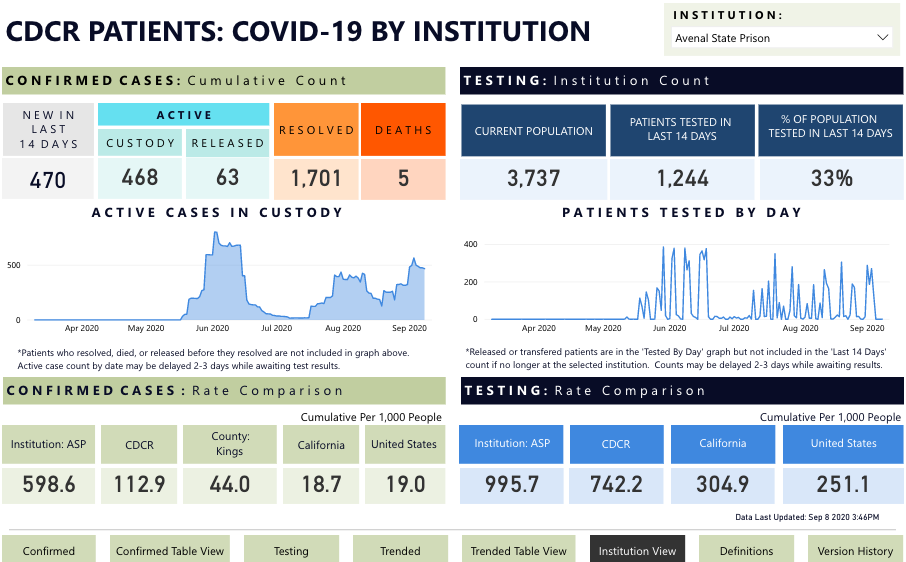
We’ve been tracking the CDCR prisons as well as CA counties for months now, and I should probably say that I’m not at all sure whether this is a third outbreak or the continuation of the second one; testing has been sporadic and erratic and basically reflects Trump’s philosophy of “no testing –> no cases.” Nonetheless, it indicates active disease, and it’s not the only place with hundreds of cases. Folsom is doing abysmally as well:
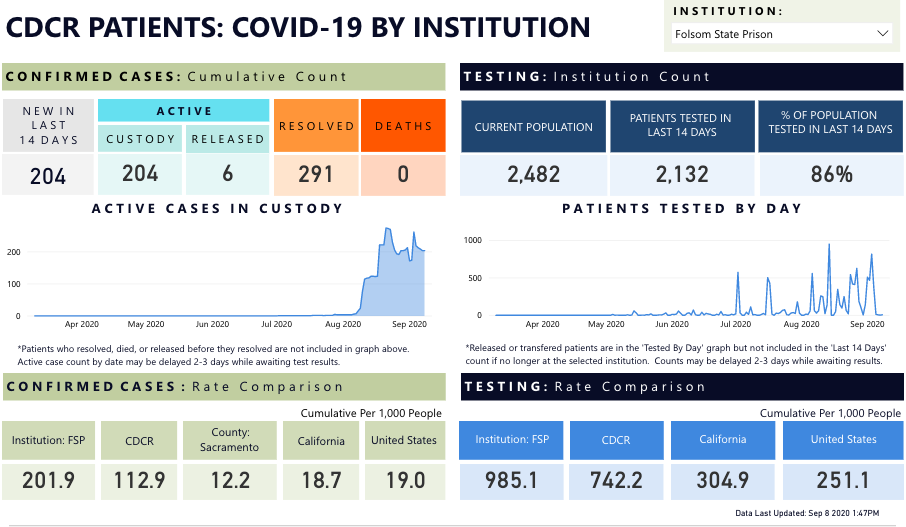
The Court, however, expressed the need to restrain the extent of their inteference with prison business via a direct release order. They pressed petitioner’s representatives on this point, and I think I would have argued that CDCR *needs* help and guidance from the courts because it had *ample* opportunity to do the decent thing and didn’t do so. Even the current CDCR plan is dated, inadequate, targets the wrong people, and we now hear will take the better part of a year to implement, which will come woefully late for the folks who will get sick or even die in the interim. That launched a discussion of how petitioner’s counsel would craft the priority of releases, to which they replied that the two lynchpins of the policy should be age and medical condition.
This opened the door to some breathtakingly cynical takes from the CDCR representative, the gist of which was that there was “no need to act hastily”–presumably because the urgent call to release 50% of the people in prison happened before the reductions in population and because now, after so much damage has already been done, they’re implementing some new program for sanitation and PPE equipment. Basing an argument that no remedy should be offered on the fact that the harm’s already been done was pretty much what I expected them to argue; CDCR has maintained that they are winning the fight against the virus, when in fact the virus has already won and continues to win, again and again, in prisons where COVID was thought to have abated. Justice Kline responded from the heart: “Yes there is. Yes there is. There is a need to act hastily.” People have gotten sick and died, he said, and we must ensure that no more of this happens. We now wait to hear what the Court will decide.
Blackface Scandals Are the Logical Conclusion of the Performative Goodness Race
As if we don’t have bigger tofu slices to fry–with 57 days till the election, we absolutely do–the academic/activist left is atwitter (pun intended) about yet another blackface scandal. This time, it’s Jessica Krug, African and Latin American history professor at George Washington University, whose identity as “Jess La Bombalera” was, as it turns out, fictitious: she grew up Jewish in Kansas City. Facing imminent unmasking by colleagues who suspected that something was awry, Krug published a self-excoriating screed on Medium, in which she admitted to fabricating “a Blackness that I had no right to claim: first North African Blackness, then US rooted Blackness, then Caribbean rooted Bronx Blackness.”
This mess comes to us just a few years after the exposure of Rachel Dolezal, the NAACP official who cultivated an African-American-passing appearance and sparked a debate on whether “transracial” was a “thing,” and a few months after the death of author H.G. Carrillo (“Hache”) of COVID-19, which exposed his lifelong fabrication of a Cuban-American identity. Because of the nature of the identity-manufacturing–white people posing as black–Krug and Dolezal drew understandable ire, and both scandals erupted amidst waves of uprising about racial inequality.
Plenty of personal trauma and pathology is evident in both stories, but Durkheim taught us to see even the most personal phenomena as social facts. Given the progressive obsession with performance, these scandals are a Petri dish for dissection and, faithful to the trappings of the genre, most of these have revolved around the authenticity (or lack thereof) of apologies. But I found an especially insightful twitter thread by Yarimar Bonilla, who astutely remarks that it was “[k]ind of amazing how white supremacy means [Krug] even thought she was better at being a person of color than we were.” Bonilla offers revealing examples of how expertly Krug trafficked in the tropes of progressive oneupmanship:
She always dressed/acted inappropriately—she’d show up to a 10am scholars’ seminar dressed for a salsa club etc—but was so over the top strident and “woker-than-thou” that I felt like I was trafficking in respectability politics when I cringed at her MINSTREL SHOW. In that sense, she did gaslight us. Not only into thinking she was a WOC but also into thinking we were somehow both politically and intellectually inferior.While claiming to be a child of addicts from the hood, she boasted about speaking numerous languages, reading ancient texts, and mastering disciplinary methods—while questioning the work of real WOC doing transformative interdisciplinary work that she PANNED. She consistently trashed WOC and questioned their scholarship. She even described my colleague Marisa Fuentes as a “slave catcher” in the introduction to her book. Kind of amazing how white supremacy means she even thought she was better at being a person of color than we were.That pathology remains evident in her mea culpa article. Somehow she manages to remain ultra woke and strident, still on her political moral high horse, caling for white scholars to be cancelled –in this instance her own white self.
Yarimar Bonilla on Twitter, Sep. 3, 2020
Bonilla is not the only scholar who blamed white supremacy–in this particular case, Krug’s whiteness–for the scandal: elsewhere on twitter, Sofia Quintero quipped that “[n]othing says white privilege like trying to orchestrate your own cancellation.” But I think there’s something else going on here. As many people have observed, Krug materially benefitted from her deceit, through fellowships and opportunities open to underrepresented people of color. The benefits, however, don’t end there, and it’s time to be honest about this. Overall (no matter how much our Attorney General chooses to ignore this), white people enjoy preferential treatment across the board, starting with the very basic good fortune to avoid humiliating, dangerous, and sometimes lethal encounters with the police, and continuing through intergenerational wealth, opportunity, and representation. However, there are pockets and milieus–and they are not minuscule or insignificant–where being a person of color confers real, valuable social advantages. I happen to know this milieu, the academic-activist pocket, quite well, and I think the social dynamics in it explain a lot. It’s not just scholarships and fellowships (though there are examples of material benefits.) It’s the mantle of authenticity, the uncontested ability to hold a moral high ground, and the sometimes-explicit, sometimes-tacit permission to treat others publicly with disdain.
The moral high ground is not unrelated to material benefits in academia (such as they are, given the initial barriers to academia for people from marginalized backgrounds in the first place), but the mantle of superior morality in itself is a precious commodity for some academics/activists. Because white people cannot be black (or can they? Read Adolph Reed’s take on racial essentialism, if you can get around his disregard for Caitlyn Jenner), the next best thing is to be the best white person they can possibly be, which is why we engage in the pageantry of racial confessionals every time yet another horrific killing of a black person produces a swell of uprising against racial inequality (that there’s immense grief and rage is understandable, and it has to go somewhere, but it’s telling that it goes into this variant of moral theatre.) Krug and Dolezal knew full well that, in this competition, it’s turtles all the way down, and simply drew the obvious conclusion: the only way to win the performative goodness race, the ultimate white progressive oneupmanship, is to subvert the whole thing by becoming black yourself.
Except, as Bonilla astutely tells us, and as Krug and Dolezal have taught us, it doesn’t end there, because it turns out that white people haven’t cornered the market on performative goodness. It plays out in remarkably similar ways among academics and activists of color, where strident and edgy performance of authenticity confers the symbolic benefits of being better than other (less radical, less woke, more white-conforming) nonwhite people. Inevitably (and this is true even if you aren’t a white person pretending to be nonwhite), someone’s going to be woker than you, purer than you, more authentic and edgy than you (as Touré Reed wrote, the demand for this kind of performance is a problem in itself.) One’s own goodness is a helluva drug; one needs larger and larger doses, ad infinitum. On the brink of being unmasked, Krug correctly deduced that the only move left on the chessboard was self-cancelation: embracing an ethos of zero forgiveness and zero redemption must exact the ultimate price. After all, she says, “my politics are as they have ever been, and those politics condemn me in the loudest and most unyielding terms.”
Is there another way out of this grim festival of condemnation and self-condemnation? Yes, but only if we see the recent slew of blackface scandals differently. Whether or not Dolezal or Krug “get”, to use another odious idiom from this milieu, to be redeemed, is not particularly interesting to me; like Bonilla, I don’t think we can or should spend energy marinating in the bacchanalia of punishment that this sort of thing dredges up. Instead, I suggest that people like Dolezal, Krug, and Carrillo–like the many people who “passed” before them across racial lines in America–have valuable lessons to teach us about the social cost-benefit calculus of passing. If we view these scandals as social facts, we learn where the perceived advantages and drawbacks lie, and might come to important conclusions.
I remember reading Philip Roth’s The Human Stain with great interest and great discomfort. Roth’s protagonist, Coleman Silk, is an academic widely perceived as a Jew, whose life is destroyed following innocent quip at a classroom–using the word “spooks” for “spies”, a term that also carries racially-derogatory connotations. Subsequently, it is revealed that Silk is actually African American but had been passing as a Jew since a stint in the Navy. He completed graduate school, married a white woman and had four children with her, never revealing his African-American ancestry to his family. As Roth writes, Silk chose “to take the future into his own hands rather than to leave it to an unenlightened society to determine his fate”.
The Human Stain is crafted around a real story–the witchhunt against Roth’s friend Melvin Tumin for a similar innocent utterance. It’s not the only example: John McWhorter relays a similar incident, and if you want something more recent, this idiotic USC reaction to absolutely nothing is a prime example. Roth’s spin on this story of “cancelation” teaches us the same conclusions: endless competitions of moral superiority, lacking in compassion and forgiveness and hingeing on identity as the ultimate arbiter of all things, end up with the snake swallowing its own tail. It’s not a coincidence that Roth chooses to contrast the witchhunt with its logical conclusion: it’s the perfect confluence of our search for racial benefits and our appetite for meting out costs.
In other words, Krug, Dolezal, et al. are being reviled for being exceptions, aberrations, when they are mere corollaries of the game that everyone around them plays on the regular–a game of excoriations, public apologies, public rejections of apologies, obsessions with performance and appearance. I’m going to venture a not-very-wild guess that they are not the only ones. People of all colors in this mileu are so invested in this game, so I’d be surprised if there weren’t other passers around, trying to circumvent the white goodness competition only to find themselves playing the person-of-color goodness competition. Racism and racial inequality have wrought many ills, but this is one we can actually fix ourselves. Let’s stop playing this game, okay? It’s occupying so much cultural room that there isn’t enough left to do the actual work of racial equality–donating to worthy causes, supporting political candidates that move us farther in terms of racial and economic equality, revamping business to allow all families the chance of intergenerational wealth. How about, rather than tying ourselves up in knots about how we can come up with more, better, symbolic representation of our goodness, we call it quits and focus on quietly and efficiently doing the right thing? We could if we learned the right lesson from these scandalous morality tales, but I’m not holding my breath.
For a more lighthearted take on this, I highly recommend this hilarious conversation between Trevor Noah and Michelle Wolf. It suffers from some of the essentialist ailments I talked about (if she “passes” for a person of color, how can she “cry her way out of a ticket?”), but it’s so enjoyable nonetheless.
Nonhumans Suffer In Our Conflicts
There is a gorgeous ritual, devised by John Seed and Joanna Macy, known as the Council of All Beings. Participants embody a nonhuman entity or species and speak for it. There are lots of ways to participate, ranging from mask-making and embodiment to speech; the idea is to offer, in a humanly understandable form, some insight into the ways in which human activities are affecting nonhuman life.
With so much human suffering embroiled in my work–prison suffering, plague suffering, fire suffering, protest suffering–it is easy to get caught up and forget that the conflicts that now seem vitally important to us are completely irrelevant to most of the natural world, and yet they affect it in horrendous ways. In many ways, the upcoming election is a desperate fight for the future of the planet by the one species with the power to destroy it all. But sometimes my attention is drawn to the suffering of nonhumans swept–as victims, as unwilling participants–in our all-too-human brawls.
Last week, my heart broke about the dead chicks caught in the war to preserve the post office. True, the chicks were destined to go to farms, where their lot in life would be miserable, but can you, for just one second, let your heart beat like the heart of a suffocating chick, terrified and overpowered and without any understanding of what is happening?
Today, I hear from my parents and friends about how the Israeli police has been using police horses to tame and overpower the protesters against Netanyahu. There’s a lawsuit arguing that the horses–wild, free, beautiful–are extremely stressed and frightened in these roles, and that driving them into crowds, noise, and violence is anathema to their nature. The very use of horses by police is sickening to me. What are police doing with horses anyway? Are we in the 1300s? What in the world is this medieval shite?
Nonhuman animals should never be used as pawns in the hellish situations we humans devise for each other. Animals should not be coerced into servitude, especially not in the service of these horrific institutions/situations.

